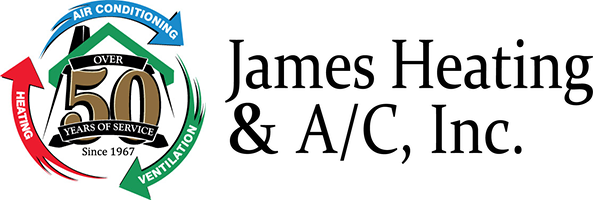
Between a relaxing vacation or a long trip for work, taking a trip means making plans for your home comfort system. You can't use it while you’re not home, so you can make adjustments as appropriate to minimize your energy use. At the same time, you shouldn't just shut it down for the entire duration of your trip.
In general, it’s best to leave your HVAC system on and adjust the temperature depending on whether it's winter or summer. That way you can reduce energy costs without having to worry about coming back to an uncomfortable home. We’ll walk you through why you should avoid turning your HVAC system off as well as the best thermostat settings for various times of year.
This Is Why You Don't Leave Your Thermostat Alone
While you may be tempted to turn your HVAC system off before a trip, this could end up causing costly problems by the time you come back. This is notably true if the weather will be severely hot or cold while you’re gone.
For example, switching the HVAC system down in the summer will sometimes cause very high humidity. Not only will your home feel muggy and uncomfortable when you come back, but it could have also invited mold/mildew growth or pest infestations.
And over the winter, leaving the furnace off might lead to pipes freezing up or even bursting. It’s exhausting to come home from a vacation only to discover extensive water damage close to a broken pipe.
Best Thermostat Settings While at Work
You can make temperature adjustments even if you’re coming and going to work. Since you’re out of the house for 8 hours or more, it doesn’t help your monthly energy bill to keep an empty home heated or cooled as if you were there. As a general rule, it’s suggested to adjust the thermostat by 5 degrees or more. This means that if you prefer a comfortable 72 degrees, think about increasing it to 76-77 while you’re at work.
But you can save even more if you’re willing to further adjust the temperature. As stated by the Department of Energy, you could save around 10% on your HVAC expenses by making an adjustment of 7-10 degrees.
Best Thermostat Settings While on Vacation in Summer
If you leave for a lengthier trip in the hottest part of summer, you can make bigger adjustments. This prevents wasting energy while still protecting your home from the issues that come with leaving it uncooled. Around 5 degrees is appropriate for shorter trips while a larger adjustment of 10 degrees is worthwhile if you’ll be gone for 2 weeks or more. If you enjoy keeping the house at 72 in the summer, 78-82 will offer the best results.
Ideal Thermostat Settings While On a Trip in Winter
To determine the most energy-efficient thermostat setting for a winter trip, consider lowering the temperature by the same amount you would adjust it in summer. 68 is a common winter thermostat setting, so turning it down to 63-58 will prevent ice from forming on pipes while restricting how frequently your furnace runs.
Smart Thermostats Are Even Better: Benefits of Smart Thermostat Installation
A great way to optimize your home’s HVAC system while away is with a smart thermostat. This special type of programmable thermostat uses intelligent software to track your usual comfort habits. It gradually understands these preferences and makes automatic adjustments to the schedule for better energy efficiency. And with Wi-Fi connectivity, you can remotely access your HVAC system using a smartphone or tablet.
Smart thermostats are stuffed with features to help you save on your energy bill. For instance, specific models can monitor electricity prices to bolster heating or cooling when prices are lower. They can be used with high-efficiency, variable-speed equipment to optimize how long your HVAC system needs to run. It’s the perfect tool to enhance how you control your comfort system. If you’re planning on investing in a smart thermostat, there are a variety of ways you can lower your costs, effectively getting a smart thermostat for free. The next time you are away from home, you can enjoy true peace of mind that your HVAC system won’t stir up any trouble while you’re away.

